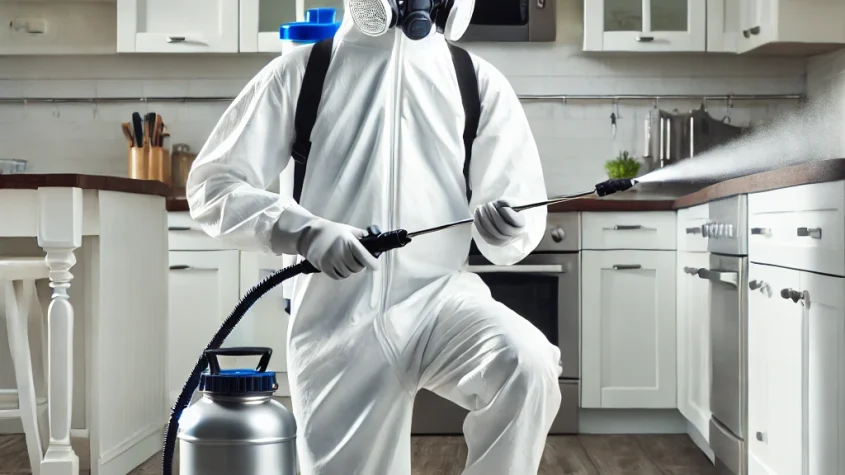
Rats can pose significant challenges for homeowners and businesses in New Westminster. Effective rat control New Westminster not only prevents property damage but also protects public health by reducing the risk of disease transmission. Understanding the local rat population and its behavior is crucial for implementing successful management strategies.
New Westminster’s unique urban environment provides ideal conditions for rat nesting and breeding. Residents may notice signs such as droppings or gnaw marks, indicating an infestation. Timely and appropriate responses can help mitigate the issue before it escalates, making community awareness essential.
Employing effective rat control measures may include sanitation practices, sealing entry points, and utilizing traps or professional extermination services. Familiarity with local regulations and best practices can empower individuals and businesses to take proactive steps in ensuring a rat-free environment.
Understanding Rat Infestations in New Westminster
Rats pose significant challenges for urban communities like New Westminster. This section covers common rat species found in the area, factors that attract them, and the associated public health risks.
Identifying Common Rat Species
In New Westminster, the primary species encountered are the Norway rat and the roof rat.
- Norway rats are robust, with brown fur and a thick body. They often nest in burrows or in buildings’ lower levels.
- Roof rats are smaller, with a more slender build and a preference for higher altitudes. They often inhabit attics and ceilings.
Recognizing these species is vital for effective control measures. Accurate identification helps determine the most appropriate management strategies.
Factors Attracting Rats to Urban Areas
Several factors contribute to rat infestations in urban settings like New Westminster.
- Food Sources: Available food supplies, such as garbage, pet food, and birdseed, are significant attractants.
- Shelter: Cluttered areas, overgrown vegetation, and building voids provide ideal nesting conditions.
- Water Supply: Leaks and standing water can draw rodents into homes.
A lack of preventative measures can exacerbate these attractions, increasing the likelihood of infestations.
Public Health Risks Associated with Rats
Rats are carriers of various diseases, posing serious health risks to humans. Some of the notable diseases include:
- Leptospirosis: A bacterial infection that can cause severe illness.
- Salmonella: Rats can transmit this bacteria through contaminated food or surfaces.
- Hantavirus: Transmitted through droppings and urine, it can lead to respiratory issues.
Additionally, rat infestations can trigger allergies and asthma in sensitive individuals. Therefore, monitoring and controlling rat populations is crucial for public health safety.
Effective Rat Control Strategies
Effective rat control involves a combination of preventative measures, professional services, and do-it-yourself techniques. Each approach plays a crucial role in managing and eliminating rat populations effectively.
Preventative Measures for Rat Control
Preventing rat infestations starts with eliminating potential food and shelter sources. Property owners should seal any gaps or holes in walls, foundations, and roofs. Rats can enter through surprisingly small openings.
Key preventative actions include:
- Storing food securely: Use airtight containers for pantry items.
- Regularly cleaning: Keep areas free of crumbs and food waste.
- Yard maintenance: Trim shrubs and grass to reduce hiding spots.
Additionally, removing clutter and debris around the property can discourage rats from nesting nearby. Effective waste management, such as using sealed trash bins, further reduces attractants.
Professional Pest Control Solutions
Engaging professional pest control services can provide comprehensive strategies tailored to specific situations. Experts often use a variety of techniques, including traps, baiting systems, and exclusion methods.
Common professional services include:
- Inspection and assessment: Technicians evaluate the extent of the infestation.
- Targeted treatments: Bait and traps are placed strategically for maximum effectiveness.
- Follow-up services: Continued assessments ensure the problem is resolved.
Professionals may also provide helpful advice on preventing future infestations. Their expertise is vital for handling large-scale problems or when DIY methods prove ineffective.
DIY Rat Control Techniques
Homeowners can attempt various DIY strategies to manage rat populations. These methods may reduce numbers while waiting for professional assistance or serve as ongoing maintenance.
Effective DIY techniques include:
- Setting traps: Snap traps and electronic traps provide efficient solutions.
- Homemade repellents: Mixtures of essential oils, like peppermint or eucalyptus, can deter rats.
- Ultrasonic pest repellers: Devices emitting high-frequency sounds aim to disrupt rat activity.
While DIY solutions can be effective, consistent monitoring is crucial. Regular checks help identify new signs of activity, allowing for timely actions.
Bathroom Renovation Hamilton: Transforming Your Space with Expert Solutions
Bathroom renovations in Hamilton can significantly enhance both the functionality and aest…









